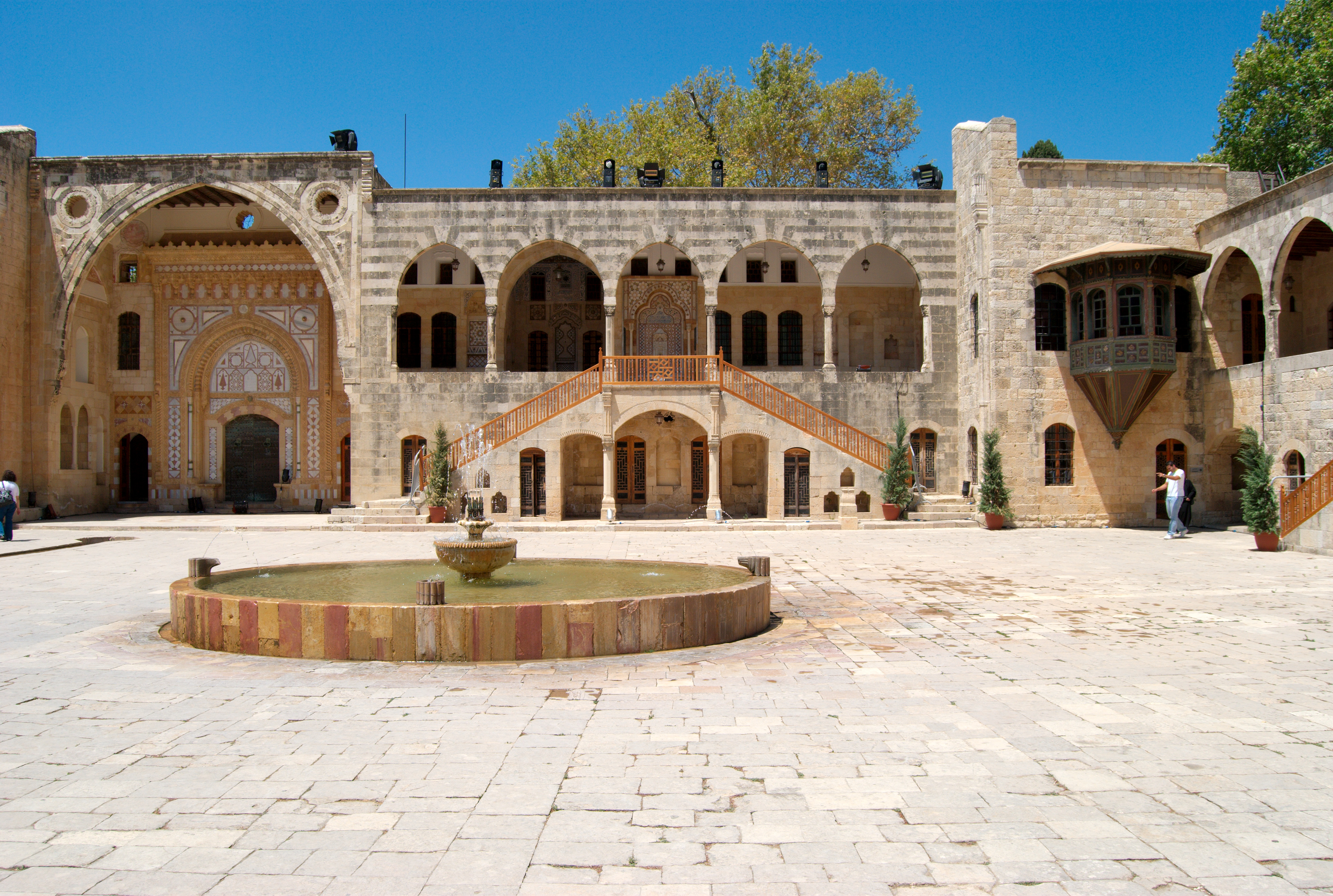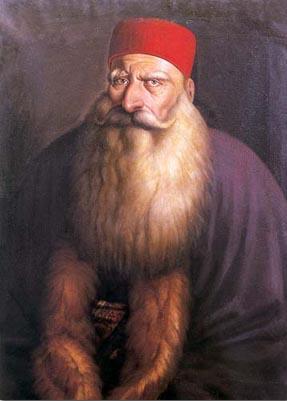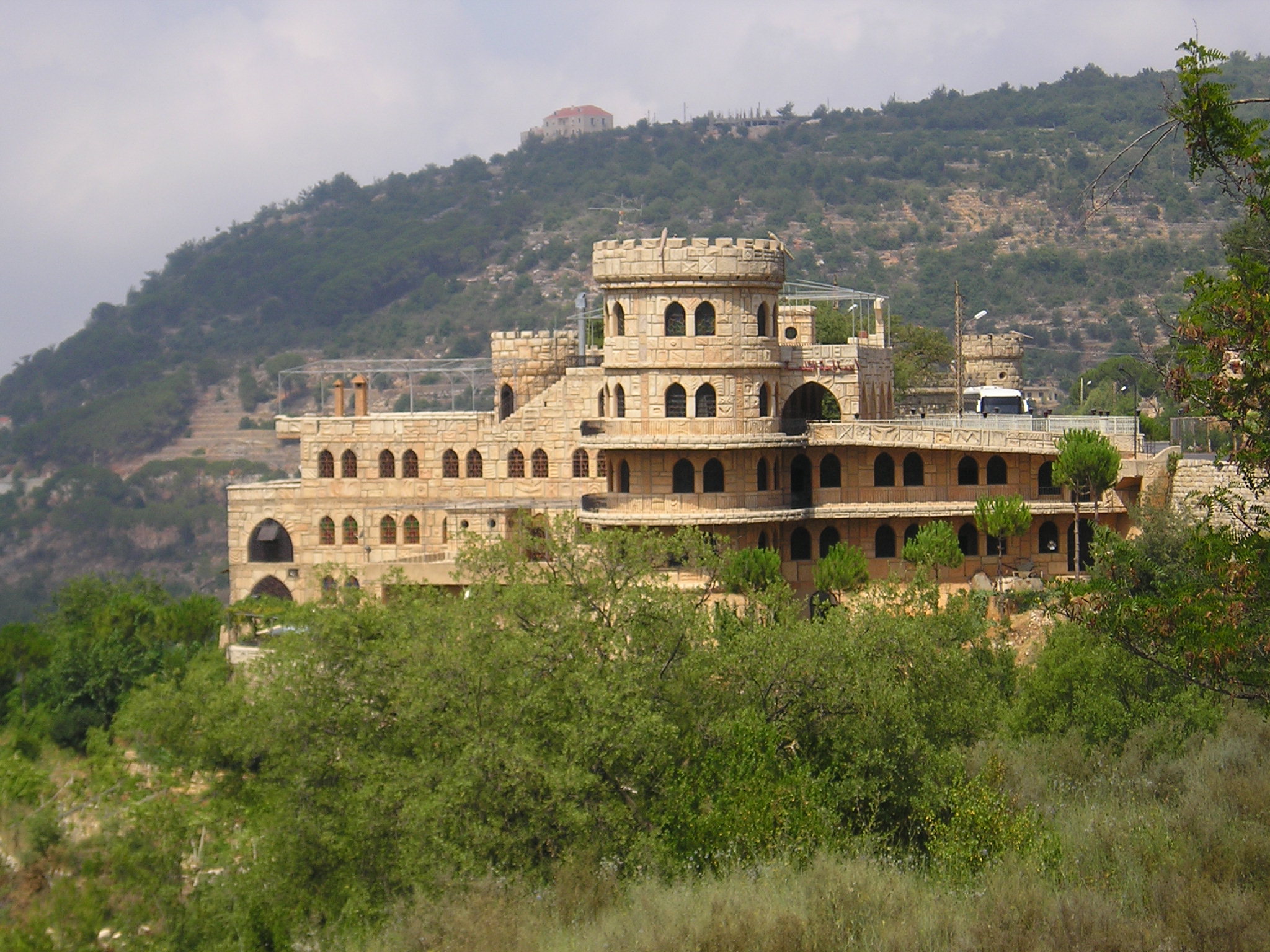|
Chouf
Chouf (also spelled Shouf, Shuf or Chuf, in ''Jabal ash-Shouf''; french: La Montagne du Chouf) is a historic region of Lebanon, as well as an administrative district in the governorate (muhafazat) of Mount Lebanon. Geography Located south-east of Beirut, the region comprises a narrow coastal strip notable for the Christian town of Damour, and the valleys and mountains of the western slopes of Jabal Barouk, the name of the local Mount Lebanon massif, on which the largest forest of Cedars of Lebanon is found. The mountains are high enough to receive snow. History The Emirs of Lebanon used to have their residence in Chouf, most notably Druze Emir Fakhr al-Din II, who attained considerable power and acted with significant autonomy from the Ottoman Empire in the 17th century. He is often referred to as the founder of modern Lebanon, although his area of influence and later control included parts of current Israel and Syria. Other emirs include the more controversial Bachir Chehab ... [...More Info...] [...Related Items...] OR: [Wikipedia] [Google] [Baidu] |
Mountain War
The Mountain War ( ar, حرب الجبل , ''Harb al-Jabal''), also known as the War of the Mountain and Guerre de la Montagne in French language, French, was a subconflict between the Lebanese Civil War#Second phase of the war.2C 1982-1983, 1982–83 phase of the Lebanese Civil War and the Lebanese Civil War#Third phase of the war.2C 1984-1989, 1984–89 phase of the Lebanese Civil War, which occurred at the mountainous Chouf District located south-east of the Lebanese Capital Beirut. It pitted the Christianity in Lebanon, Christian Lebanese Forces (militia), Lebanese Forces militia (LF) and the official Lebanese Armed Forces (LAF) against a coalition of anti-government Islam in Lebanon, Muslim leftist militias led by the Druze in Lebanon, Druze Progressive Socialist Party (PSP), backed by the Palestine Liberation Organization (PLO) and Syria. Hostilities began when the LF and the Lebanese Armed Forces, LAF entered the predominantly Druze in Lebanon, Druze Chouf district to bri ... [...More Info...] [...Related Items...] OR: [Wikipedia] [Google] [Baidu] |
Fakhr Al-Din II
Fakhr al-Din ibn Qurqumaz Ma'n ( ar, فَخْر ٱلدِّين بِن قُرْقُمَاز مَعْن, Fakhr al-Dīn ibn Qurqumaz Maʿn; – March or April 1635), commonly known as Fakhr al-Din II or Fakhreddine II ( ar, فخر الدين الثاني, Fakhr al-Dīn al-Thānī), was the paramount Druze emir of Mount Lebanon from the Ma'n dynasty, an Ottoman governor of Sidon-Beirut and Safed, and the strongman over much of the Levant from the 1620s to 1633. For uniting modern Lebanon's constituent parts and communities, especially the Druze and the Maronites, under a single authority for the first time in history, he is generally regarded as the country's founder. Although he ruled in the name of the Ottomans, he acted with considerable autonomy and developed close ties with European powers in defiance of the Ottoman imperial government. Fakhr al-Din succeeded his father as the emir of the Chouf mountains in 1591. He was appointed over the sanjaks (districts) of Sidon-Beirut ... [...More Info...] [...Related Items...] OR: [Wikipedia] [Google] [Baidu] |
Druze
The Druze (; ar, دَرْزِيٌّ, ' or ', , ') are an Arabic-speaking esoteric ethnoreligious group from Western Asia who adhere to the Druze faith, an Abrahamic, monotheistic, syncretic, and ethnic religion based on the teachings of Hamza ibn Ali ibn Ahmad and ancient Greek philosophers like Plato, Aristotle, Pythagoras, and Zeno of Citium. Adherents of the Druze religion call themselves " the Monotheists" or "the Unitarians" (''al-Muwaḥḥidūn''). The Epistles of Wisdom is the foundational and central text of the Druze faith. The Druze faith incorporates elements of Isma'ilism, Christianity, Gnosticism, Neoplatonism, Zoroastrianism, Buddhism, Hinduism, Pythagoreanism, and other philosophies and beliefs, creating a distinct and secretive theology based on an esoteric interpretation of scripture, which emphasizes the role of the mind and truthfulness. Druze believe in theophany and reincarnation. Druze believe that at the end of the cycle of rebirth, which is achie ... [...More Info...] [...Related Items...] OR: [Wikipedia] [Google] [Baidu] |
Lebanese Civil War
The Lebanese Civil War ( ar, الحرب الأهلية اللبنانية, translit=Al-Ḥarb al-Ahliyyah al-Libnāniyyah) was a multifaceted armed conflict that took place from 1975 to 1990. It resulted in an estimated 120,000 fatalities and an exodus of almost one million people from Lebanon. The diversity of the Lebanese population played a notable role in the lead-up to and during the conflict: Sunni Muslims and Christians comprised the majority in the coastal cities; Shia Muslims were primarily based in the south and the Beqaa Valley in the east; and Druze and Christians populated the country's mountainous areas. The Lebanese government had been run under the significant influence of elites within the Maronite Christian community. The link between politics and religion had been reinforced under the French Mandate from 1920 to 1943, and the country's parliamentary structure favoured a leading position for its Christian-majority population. However, the country had a ... [...More Info...] [...Related Items...] OR: [Wikipedia] [Google] [Baidu] |
Lebanese Druze
Lebanese Druze ( ar, دروز لبنان, durūz lubnān) are Lebanese people who are Druze. The Druze faith is a monotheistic and Abrahamic religion, and an ethnoreligious esoteric group originating from the Near East who self identify as unitarians ( ar, موحدين, muwaḥḥidīn). The Lebanese Druze people are believed to constitute about 5.2 percentLebanon 2015 International Religious Freedom Report U.S. Department of State. Retrieved on 2019-04-23. of the total population of Lebanon and have around 1.5 million members worldwide. The Druze, who refer to themselves as al-Muwahhideen, or "believers in one God," are concentrated in the rural, mountainous areas east and south of |
Beiteddine
Beit ed-Dine ( ar, بيت الدين), also known as Btaddine ( ar, بتدين) is a small town and the administrative capital of the Chouf District in the Mount Lebanon Governorate in Lebanon. The town is located 45 kilometers southeast of Beirut, and near the town of Deir el-Qamar from which it is separated by a steep valley. It had 1,613 registered voters in 2010 and its inhabitants are predominantly Christians from the Maronite, Melkite and Greek Orthodox denominations. Beit ed-Dine's total land area consists of 244 hectares and its average elevation is 860 meters above sea level. The town is well known for the Beiteddine Palace, which hosts the annual summer Beiteddine Festival. History Ottoman era Emir Bashir II of the Shihab dynasty, who later became the ruler of the Mount Lebanon Emirate, started building the palace in 1788 at the site of the Druze hermitage (hence the palace's name, translating as "''House of Faith''"), indicating that the town was initially populate ... [...More Info...] [...Related Items...] OR: [Wikipedia] [Google] [Baidu] |
Mount Lebanon Mutasarrifate
The Mount Lebanon Mutasarrifate (1861–1918, ar, مُتَصَرِّفِيَّة جَبَل لُبْنَان, translit=Mutasarrifiyyat Jabal Lubnān; ) was one of the Ottoman Empire's subdivisions following the Tanzimat reform. After 1861, there existed an autonomous Mount Lebanon with a Christian mutasarrıf, which had been created as a homeland for the Maronites under European diplomatic pressure following the 1860 massacres. The Maronite Catholics and the Druze founded modern Lebanon in the early eighteenth century, through the ruling and social system known as the "Maronite-Druze dualism" in Mount Lebanon. This system came during the era of administrative organizations initiated by Sultan Abdul Majeed I in an attempt to extricate the Ottoman State from its internal problems, and it was approved after the major sectarian strife of 1860 and the numerous massacres that occurred in Mount Lebanon, Damascus, the Bekaa Valley and Jabal Amel among Muslims and Christians in gener ... [...More Info...] [...Related Items...] OR: [Wikipedia] [Google] [Baidu] |
Barouk
Barouk ( ar, باروك) is a village in the Chouf District of Mount Lebanon Governorate in Lebanon. Barouk is located 52 kilometers southeast of Beirut. Its average elevation is 1000 to 1200 meters above sea level and its total land area consists of 2,762 hectares. The village had 5,197 registered voters in 2010. Its inhabitants are predominantly Druze and Maronite and Melkite Christians. Historically, Barouk is known for being the "land of good", because of its fountain, Nabeh-el-Barouk. The poet Rachid Nakhleh, the writer of the national hymn, ''Kulluna lel watan'', was born in Barouk. The village is also well known for its apples and other fruits, and for its many pine and oak forests. Barouk is named after the adjacent mountain of Jabal el-Barouk, which stands 1,943 meters above sea level. The mountain also has the largest nature reserve in Lebanon, the Al Shouf Cedar Nature Reserve, and contains the oldest cedar Cedar may refer to: Trees and plants *''Cedrus'', common E ... [...More Info...] [...Related Items...] OR: [Wikipedia] [Google] [Baidu] |
Bachir Chehab II
Emir Bashir Shihab II () (also spelled "Bachir Chehab II"; 2 January 1767–1850) was a Lebanese emir who ruled Ottoman Lebanon in the first half of the 19th century. Born to a branch of the Shihab family which had converted from Sunni Islam, the religion of previous Shihabi Emirs, he was the only Maronite ruler of the Emirate of Mount Lebanon. Early life and family Bashir was born in 1767 in Ghazir,Salibi 1992, p. 58. a village in the Keserwan region of Mount Lebanon. He was the son of Qasim ibn Umar ibn Haydar ibn Husayn Shihab of the Shihab dynasty,Farah 2000, p. 766. which had been elected to the super tax farm of Mount Lebanon by other Druze nobility, also known as the Mount Lebanon Emirate, when their Druze kinsmen, the Ma'an dynasty died heirless in 1697. Although the Shihab family was ostensibly Sunni Muslim, some members of the family had converted to the Maronite Catholic Church. Bashir was among the first members of his extended family to be born a Christian.Khaira ... [...More Info...] [...Related Items...] OR: [Wikipedia] [Google] [Baidu] |
Moukhtara
, alternate_name = , image = HARVEY(1861) p008 PALACE OF SAID BAG JUMBULAH AT MOKTARAH.jpg , alt = , caption = The Jumblatt family palace in Moukhtara, 1861 , map_type = Lebanon , map_alt = , latitude = , longitude = , map_size = , location =30 miles from Beirut, Lebanon , region = Chouf District, Mount Lebanon Governorate , coordinates = , type = , part_of = Settlement , length = , width = , area = , height = , builder = , material = tools, flint, bone, ceramics , built = , abandoned = , epochs = PPNB, Neolithic , cultures = , dependency_of = , occupants = , event = , excavations = 1963 , archaeologists = J. Cauvin , condition = ruins , ownership = , management = , public_access = Yes , website = , notes = Moukhtara ( ar, المختارة) is a small town in the Chouf District of the Mount Lebanon Governorate of Lebanon. The town's inhabitants are divided between Druze and Christians. It is the hometown of Walid Jumblatt, the leader of Lebanon's Progressive Soc ... [...More Info...] [...Related Items...] OR: [Wikipedia] [Google] [Baidu] |
Damour
Damour ( ar, الدامور) is a Lebanese Christian town that is south of Beirut. The name of the town is derived from the name of the Phoenician god Damoros who symbolized immortality ( in Arabic). Damour also remained the capital of Mount Lebanon for three centuries. Geography The city is located in one of the few flat areas of the Lebanese coast. It is built to the north of the river, the ancient Tamyrus, which bears its name on a dune overlooking the Mediterranean. It is surrounded by plantations of bananas and vegetable crops. It has an area of . The Beirut- Tyre Highway separates the plantations. Now dismantled, the track is a stopover. Climate Damour has a mild mediterranean climate (Köppen climate classification: ''Csa''). Churches There exist six churches in Damour, of which Notre-Dame de Damour and St Élias are the biggest. There are also three other chapels, including Sainte Thècle, St Michel, which was the first church in Damour, St Maroun, which is ... [...More Info...] [...Related Items...] OR: [Wikipedia] [Google] [Baidu] |
Deir Al Qamar
Deir al-Qamar ( ar, دَيْر الْقَمَر, lit=Monastery of the moon, translit=Dayr al-qamar), is a city south-east of Beirut in south-central Lebanon. It is located five kilometres outside of Beiteddine in the Chouf District of the Mount Lebanon Governorate at 800 m of average altitude. History Crusader period The oldest written reference to Deir el Qamar (''Deir elcamar'' or ''Deir elchamar'') goes back to 1257 and 1261 in the deeds of ''Julian of Shouf'' and ''Andrew of Shouf'' selling their lands and villages in their lordship of Shouf to the Theutonic Order as reported in ''Tabulae Ordinis Theutonici''. Ottoman period During the 16th to 18th centuries, Deir al-Qamar was the capital and the residence of the Emirate of Mount Lebanon. It is also notable for its 15th-century Fakhreddine Mosque, Fakhreddine II Palace, and the palace of the Emir Yusuf Shihab - today housing the Municipal Council. A 17th-century synagogue is still standing in the village, although closed ... [...More Info...] [...Related Items...] OR: [Wikipedia] [Google] [Baidu] |








